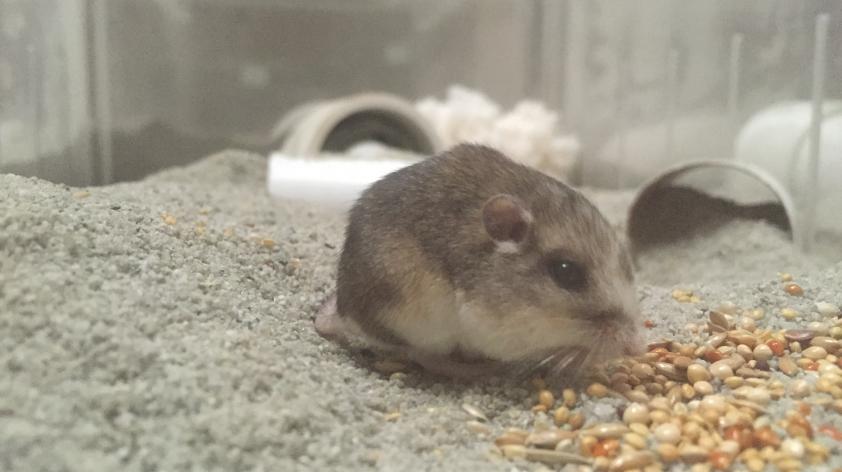
Pocket mouse: A very special litter
As the sun goes down over the San Diego Zoo Safari Park, my work day begins at the off exhibit Pacific pocket mouse captive breeding facility. I don a pair of latex gloves and- ever so gently- tease open a fluffy white nest that is 10 times the size of the little female pocket mouse that built it. I peak through the small hole that I've made and spot a stark contrast of bright pink against the white nest- four tiny, wiggling Pacific pocket mouse pups. Every litter of pups born at the captive breeding facility is an achievement, but these four little babies are extra special.....
Pacific pocket mouse breeding is- contrary to want you might think- no easy task. As a solitary species, both males and females are highly aggressive and generally only interact when the female is in estrus and ready to mate. Unfortunately, this period of female receptivity can be as short as just an hour, making it a tricky business to mate our captive mice. We’ve learnt a few things over the years and we’ve had great success with our breeding program, but we are always learning.
One of the more interesting aspects of Pacific pocket mouse reproduction is that females can breed and give birth in the same breeding season in which they themselves were born. This quick onset of sexual maturity is great news for a captive breeding program such as ours, as it provides us with the opportunity to grow our population quickly. Unfortunately, we have never managed to breed our female ‘young-of-the-year’ (or YOY, as we affectionately call them) in the year that they were born in captivity. So imagine my surprise as, last month, I watched a female YOY (the lovely #154) perform beautiful courtship behavior with a male before finally laying on her side and mating with him- our first ever YOY mating!
I was thrilled to have finally managed a YOY mating, but I cautioned myself not to get too excited that she was pregnant- approximately only 50% of mated females go on to give birth to a litter of pups in captivity. Pacific pocket mice have a short gestation period of approximately 23 days, but it is difficult to tell whether or not a female is pregnant until Day 19 of their pregnancy, so it often feels like a very long wait! I watched #154's progress carefully, weighing her every few days and looking for behavioral signs that she was pregnant. A week after her mating, she began building a large nest- an excellent sign that she was preparing herself for pups. I kept my fingers crossed and on Day 19 of her pregnancy, it became clear from her large weight gain and swollen abdomen that #154 was indeed pregnant!
This achievement is important for a number of reasons. Firstly, breeding YOY will help us to continue to grow our captive pocket mouse population, which will allow us to establish new wild populations of this charismatic and ecologically important rodent. Secondly, by observing the same reproductive behavior in captivity as we see in the wild, we are assured that we are providing our captive pocket mice with an environment that facilitates wild-type behavior.
Since our first YOY mating, we have managed to successfully mate a number of other YOY females this year, with current indicators suggesting that these females are also likely pregnant. We all hope that this is a trend that will continue in our breeding program and that we can continue to lead the fight against extinction of the Pacific pocket mouse.
Watch a short video about other Pacific pocket mouse milestones: https://www.youtube.com/watch?v=BQEcomLdDO0&feature=youtu.be













